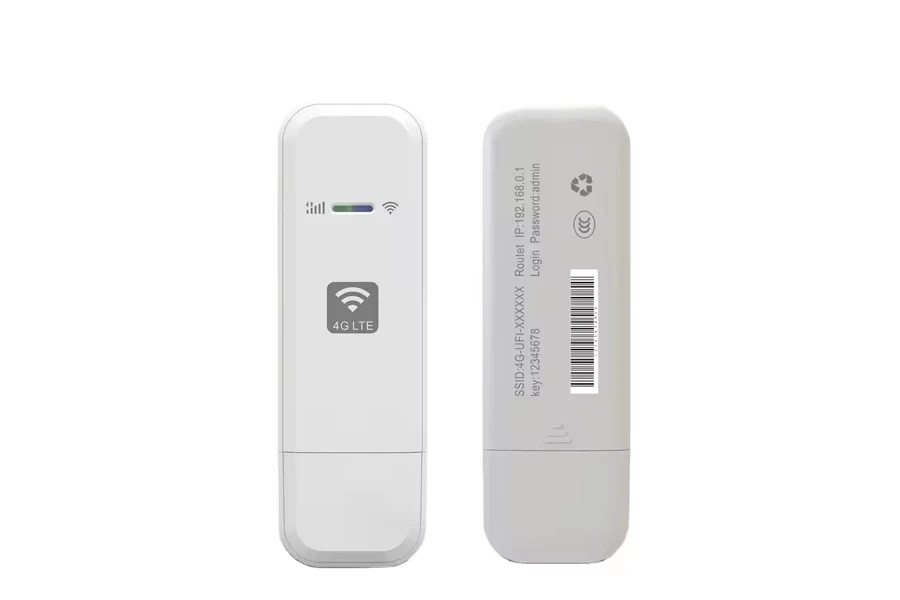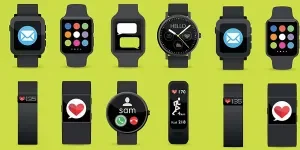In 2024, modems continue to serve as the backbone of internet connectivity, ensuring that businesses maintain the high-speed, reliable access essential for today’s digital demands. These devices, whether they are simple units connecting a single computer to the internet or complex systems managing entire networks, enable a multitude of functions from basic data transfer to advanced cloud computing and streaming of high-definition content. With technological advancements pushing the capabilities of modems further, understanding their role and maximizing their potential is critical for any organization looking to leverage internet technology for growth and operational efficiency.
Table of Contents
1. Exploring Modem Diversity and Functionality
2. Market Dynamics and Predictions
3. Criteria for Choosing the Right Modem
4. Spotlight on 2024’s Premier Modems
5. Final Thoughts
Exploring modem diversity and functionality
Modems in 2024 come in various forms, each tailored to specific network needs and environments. This diversity is vital for companies looking to maintain robust and adaptable communication infrastructures.
Catalog of modem types
The spectrum of modem types ranges widely, from traditional cable modems leveraging DOCSIS technology to advanced cellular models that accommodate mobile data needs. Cable modems, for instance, are evolving with DOCSIS 3.1 standards, allowing for speeds up to 10 Gbps, although real-world implementations might see maximum speeds around 1.2 Gbps due to current technology and infrastructure limitations. Cellular modems continue to support expanding mobile networks, emphasizing the importance of versatile internet access across different contexts.
Modems at work
In professional settings, the choice of modem can significantly influence operational efficiency. For example, businesses that require high-speed data transmission for cloud computing or large-scale data handling might opt for gigabit modems that support high throughput rates. These modems often come with multiple Ethernet ports that can be linked (known as link aggregation) to enhance the connection speed available to a single device, potentially combining several gigabit ports to exceed the typical single-port speed limit.
Understanding these types and functionalities helps companies select the best modems for their specific requirements, ensuring optimal performance and future-proofing their network setups as technology advances.

Market dynamics and predictions
Current trends in the modem sphere
The modem market has witnessed robust growth, driven by escalating demands across both household and commercial sectors. Technological advancements continue to push the envelope, enhancing modem functionalities and integration capabilities, particularly with DOCSIS 3.1 and gigabit service expansions. This advancement is pivotal in meeting the increasing requirements for higher internet speeds and more reliable connections, dictated by the surge in remote work, smart home devices, and enhanced content streaming services.
The global market for modems is also experiencing significant changes in customer preferences and buying patterns, particularly within tech and telecommunications. Enterprises are increasingly shifting their purchases towards specialists and tech manufacturers, moving away from traditional telecom operators. This trend is spurred by the need for more tailored tech solutions that offer higher quality and flexibility in services.
What the future holds
Looking ahead, the modem market is projected to continue its growth trajectory, with an anticipated compound annual growth rate (CAGR) of around 4.6% through 2029. This growth will likely be fueled by continued advancements in technology, such as the integration of 5G and the expansion of fiber-optic networks. The market is also expected to benefit from the rising demand for high-speed broadband, driven by the increasing penetration of high-bandwidth devices and the global push towards digital transformation.
Key players like Motorola, ARRIS, and NETGEAR remain at the forefront, continually innovating to capture a significant share of the market amid these evolving dynamics. The shift towards high-speed network solutions and the integration of advanced technologies like Wi-Fi 6 and network virtualization are expected to play crucial roles in shaping the future landscape of the modem industry.
Experts currently value the global modem market at approximately US$ 10.51 billion in 2023, and they project it to grow to US$ 14.45 billion by 2030. This growth is expected to occur at a compound annual growth rate (CAGR) of 4.6% from 2024 to 2030 (Cognitive Market Research) (Industry Today UK).
Overall, the modem market’s future appears promising, with ample opportunities for growth and innovation, particularly in regions like Asia-Pacific, which is poised to lead in market expansion due to its rapid technological adoption and infrastructure development.
Criteria for choosing the right modem
Decoding technical specifications
When selecting a modem, understanding the DOCSIS (Data Over Cable Service Interface Specification) standards is crucial. DOCSIS 3.1 is the latest and most advanced, supporting significantly higher speeds than its predecessor, DOCSIS 3.0. Specifically, DOCSIS 3.1 can facilitate download speeds up to 10 Gbps and upload speeds up to 1-2 Gbps, offering a tenfold increase compared to the 1 Gbps download speed of DOCSIS 3.0.
In terms of technical specifications, it is important to consider the number of downstream and upstream channels a modem can handle. For instance, modems like the ARRIS SURFboard SB8200 and Netgear Nighthawk CM1200 support extensive channel bonding, which significantly enhances data speeds and network efficiency. The SB8200 allows for 2 Gbps speeds with two gigabit LAN ports using link aggregation, while the CM1200 can support up to 2 Gbps internet across four gigabit LAN ports.
Assessing modem excellence
Evaluating a modem’s excellence involves more than just speed capabilities; reliability and manufacturer support are also pivotal. Modems from reputable brands like ARRIS and Netgear are often recommended due to their robust performance and reliability. For example, the ARRIS SURFboard SB8200 is noted for its intuitive setup and wide compatibility across multiple ISPs, making it a preferred choice for its ease of integration and stable performance.
Moreover, customer support and warranty are essential factors to consider. Companies that offer comprehensive support and regular firmware updates contribute significantly to the modem’s reliability over time. This support ensures that the modem remains secure against vulnerabilities and continues performing optimally.
Furthermore, the cost should not be the sole deciding factor; the features, performance, and future-proofing aspects like DOCSIS 3.1 compatibility should be prioritized to ensure that the modem continues to meet network demands as technology advances.
In sum, when choosing a modem, consider the technical specifications like DOCSIS standard and channel bonding capabilities, as well as the manufacturer’s reputation for reliability and customer support. Opt for modems that align with your network’s current and anticipated needs to ensure efficient and reliable internet connectivity.

Spotlight on 2024’s Premier Modems
Champions of the modem world
In 2024, several standout modems are leading the pack in terms of performance and innovation, designed to meet diverse business needs with robust capabilities and advanced technology.
- ARRIS SURFboard SB8200: Recognized for its robust functionality and ease of use, the ARRIS SURFboard SB8200 is a top contender in the modem landscape. It supports maximum speeds up to 2Gbps through two Gigabit LAN ports that can be configured for link aggregation. This feature is particularly valuable for businesses looking for reliable, high-speed internet connectivity.
- Motorola MB8611: The Motorola MB8611 is another high-performance modem, pushing the boundaries with potential speeds up to 2.5Gbps. It features a single 2.5G LAN port, making it suitable for businesses that have or plan to upgrade to multi-gig internet services and need a powerful, straightforward solution.
- Netgear Nighthawk CM1200: Ideal for network enthusiasts who demand high-speed connectivity, the Netgear Nighthawk CM1200 supports internet speeds up to 2Gbps. It offers four Gigabit LAN ports for extensive link aggregation capabilities, ensuring optimal performance for more demanding internet uses such as large file transfers and streaming multiple HD videos simultaneously.
- Netgear Nighthawk CAX80: Combining a modem and a router, the Netgear Nighthawk CAX80 is perfect for businesses looking for an all-in-one solution. It provides up to 6Gbps speeds and includes dual-band Wi-Fi, which is essential for maintaining fast and reliable wireless connections across a broader range.
- ARRIS SURFboard T25: Specifically designed for businesses using voice services over the internet (VoIP), the ARRIS SURFboard T25 includes RJ11 ports for telephone connectivity alongside robust data services. It also supports link aggregation with two Gigabit ports, suitable for businesses that require both high-speed internet and voice capabilities.
These modems represent the cutting edge of technology for business internet connectivity in 2024, offering a range of options to suit different network requirements and ensuring that businesses can maintain efficient, reliable internet access.
Feature Face-off: Comparing Premier Modems of 2024
When selecting the right modem for business use, various features and scenarios come into play, influencing the decision based on specific needs such as speed requirements, network setup complexity, and the need for integrated services like VoIP. Here’s how the top five modems of 2024 compare across these dimensions:
Speed and Link Aggregation
- ARRIS SURFboard SB8200: Known for its high-speed capabilities, the SB8200 offers up to 2 Gbps with dual Gigabit LAN ports that support link aggregation. This makes it ideal for businesses that need fast data processing and large file transfers without sacrificing reliability.
- Motorola MB8611: This model pushes the speed envelope even further with a 2.5G LAN port, supporting internet speeds up to 2.5 Gbps. It’s perfect for businesses planning to expand their bandwidth requirements as they grow, ensuring they won’t be bottlenecked by their hardware.
- Netgear Nighthawk CM1200: Equipped with four Gigabit LAN ports, the CM1200 is tailored for network enthusiasts and businesses that require setup flexibility and robust speed, supporting up to 2 Gbps. It’s especially suitable for environments where multiple devices need to connect without affecting performance.
- Netgear Nighthawk CAX80: As a high-end modem/router combo, it provides speeds up to 6 Gbps. The dual-band Wi-Fi capability ensures extensive coverage and consistent connectivity, which is crucial for businesses with a wide geographical footprint or those operating in large office spaces.
- ARRIS SURFboard T25: While it supports link aggregation and offers two Gigabit ports for up to 2 Gbps speeds, its unique value is in supporting VoIP. This feature is crucial for businesses that rely heavily on voice communications, integrating internet and telephone services in one device.

ISP Compatibility and Setup
- ARRIS SURFboard SB8200 and T25 are widely compatible with major ISPs, which simplifies the setup process. They are particularly noted for their ease of installation, which can be crucial for businesses looking to quickly deploy new technology without extensive downtime.
- Motorola MB8611, Netgear Nighthawk CM1200, and CAX80 also boast broad ISP compatibility but shine in environments where slight variations in ISP offerings and capabilities might otherwise complicate connectivity solutions.
Integrated Services and Cost-Efficiency
- Netgear Nighthawk CAX80: Offers a comprehensive solution with built-in Wi-Fi 6 technology, reducing the need for additional hardware and thus saving on costs and space. This all-in-one approach is valuable for smaller businesses or those looking to minimize IT complexity.
- ARRIS SURFboard T25: Stands out for businesses that need integrated VoIP capabilities, avoiding the need for separate adapters or systems for voice services, thus offering cost savings and reducing setup complexity.
Each modem has its strengths, and the best choice depends heavily on the specific needs of the business environment. Whether it’s for high-speed data needs, complex network setups, or integrated services, these modems offer a range of options to fit various business scenarios, making them leaders in the modem world for 2024.
Final thoughts
The selection of the right modem is pivotal for ensuring sustained high-speed connectivity and operational efficiency in a business environment. This overview of 2024’s top modems underscores the importance of aligning modem capabilities with organizational needs, from speed and integration features to ISP compatibility and future-proofing considerations. Each model offers unique benefits tailored to different business scenarios, highlighting the critical role of strategic modem choice in maintaining robust, reliable internet connections for businesses.



